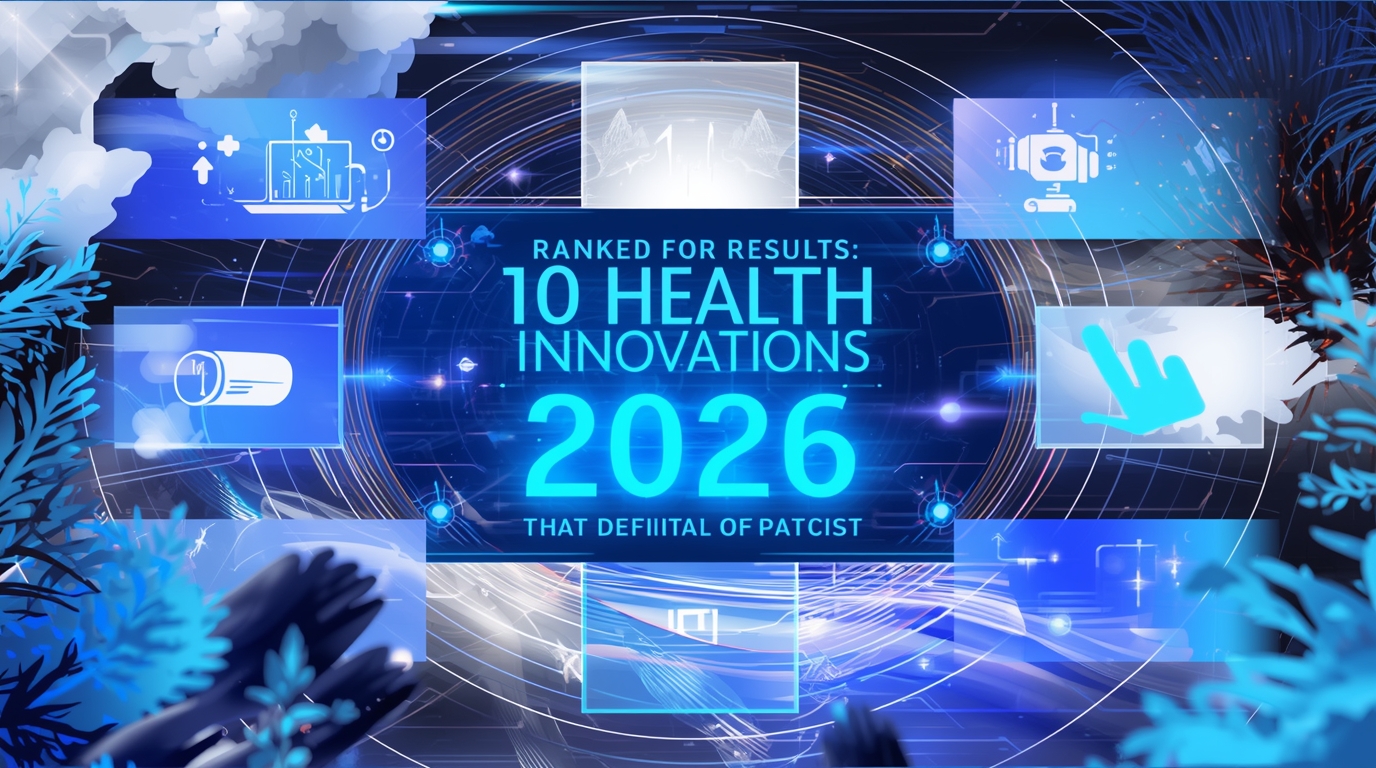The year 2026 has been a remarkable one for health and wellness. Technology, research, and innovation have combined to make healthcare smarter, faster, and more personal than ever before. From AI-powered diagnostics to breakthrough treatments, the healthcare world has taken giant leaps that could shape the future for decades. Here, we explore 10 health innovations that defined 2026, ranked by their impact, accessibility, and potential for improving quality of life.
1. AI-Powered Early Disease Detection
Artificial intelligence continues to revolutionize medicine, and in 2026, AI-powered disease detection has reached new heights. These systems analyze vast amounts of medical data—from imaging scans to electronic health records—to detect illnesses like cancer, heart disease, and neurological disorders far earlier than traditional methods.
-
Impact: Early detection improves survival rates and reduces healthcare costs.
-
Example: Startups like DeepHealth and MedVision developed AI tools that can identify subtle signs of disease from imaging scans months before a human doctor could.
-
Why it matters: Patients no longer have to wait for symptoms to appear, which can be life-saving.
In simple terms, AI in health is like having a super-smart assistant who never sleeps and spots problems before they become serious.
2. Personalized Nutrition Through DNA Analysis
Gone are the days of one-size-fits-all diets. 2026 brought mainstream adoption of personalized nutrition based on DNA. By analyzing genetic markers, companies can now provide diet plans tailored to your unique biology.
-
Impact: Better weight management, improved energy, and prevention of chronic diseases.
-
Example: NutriGene and HealthMap offer plans that show exactly which foods help your metabolism and which ones to avoid.
-
Why it matters: Understanding your body at a genetic level removes guesswork, leading to healthier choices naturally.
Imagine having a nutrition coach inside your DNA—now that’s truly personal care.
3. Telehealth Expansion with Real-Time Diagnostics
Telehealth exploded in popularity during the pandemic, but in 2026, it became even smarter. Real-time diagnostics through wearable devices and remote monitoring allow doctors to track patient health continuously, without needing in-person visits.
-
Impact: Reduced hospital visits and faster response to emergencies.
-
Example: Wearables now monitor blood pressure, glucose levels, oxygen saturation, and even detect early signs of infection.
-
Why it matters: Patients can live more independently while doctors catch problems early.
Think of it as having a doctor in your pocket—minus the white coat.
4. CRISPR Gene Editing for Rare Diseases
Gene editing, especially CRISPR, has been a hot topic for years, but in 2026, it became a game-changer for treating rare genetic diseases. Scientists successfully edited genes to correct defects that were previously untreatable.
-
Impact: Potential cure for disorders like cystic fibrosis, sickle cell anemia, and muscular dystrophy.
-
Example: Clinical trials in 2026 showed promising results in safely modifying faulty genes in children.
-
Why it matters: Rare diseases affect millions worldwide, and gene therapy offers hope where none existed.
In short, it’s like going into your body’s instruction manual and fixing the mistakes.
5. Mental Health Apps with AI Therapy
Mental health is finally getting the attention it deserves. AI-driven therapy apps in 2026 became highly effective tools for managing anxiety, depression, and stress.
-
Impact: Accessible mental health support for people who might not see a therapist.
-
Example: Apps like MindEase and CalmBot use AI to provide personalized cognitive-behavioral therapy exercises and real-time emotional support.
-
Why it matters: Mental health care becomes easier to access, reducing stigma and promoting well-being.
It’s like having a gentle, understanding counselor available 24/7 on your phone.
6. Smart Wearables for Chronic Disease Management
Wearable devices have evolved from simple step counters to advanced health monitors that assist with chronic diseases such as diabetes, hypertension, and heart conditions.
-
Impact: Continuous monitoring allows early intervention and fewer complications.
-
Example: Smart watches now track irregular heartbeats, glucose spikes, and even hydration levels.
-
Why it matters: Patients are empowered to manage their health actively, reducing dependence on hospital visits.
Imagine a personal nurse who never sleeps, gently nudging you to stay healthy.
7. Regenerative Medicine and Lab-Grown Organs
One of the most exciting innovations in 2026 is regenerative medicine, including lab-grown tissues and organs. This has the potential to solve organ shortages and drastically improve transplant success rates.
-
Impact: Patients with failing organs can now receive lab-grown replacements compatible with their body.
-
Example: Researchers successfully transplanted lab-grown liver tissues into patients during early-stage clinical trials.
-
Why it matters: It reduces waiting times for transplants and lowers the risk of organ rejection.
It’s like giving your body a second chance with tailor-made replacements.
8. Virtual Reality (VR) in Physical Therapy
VR isn’t just for gaming—it’s transforming rehabilitation. In 2026, VR-assisted physical therapy became a mainstream method for recovering from injuries and surgeries.
-
Impact: Faster recovery, increased patient engagement, and better adherence to therapy programs.
-
Example: Patients recovering from strokes use VR simulations to perform exercises that mimic real-world movements.
-
Why it matters: Therapy becomes fun, interactive, and more effective.
Think of it as stepping into a game where every level you complete makes you healthier.
9. Microbiome-Based Treatments
The human microbiome—the collection of bacteria in our gut—has been linked to everything from digestion to mental health. 2026 saw breakthroughs in microbiome-based therapies, including personalized probiotics and gut-targeted medications.
-
Impact: Better management of gut-related disorders, improved immunity, and enhanced overall health.
-
Example: Companies like GutBio designed personalized probiotic treatments based on individual microbiome analysis.
-
Why it matters: Understanding the gut can lead to targeted treatments for a variety of conditions.
It’s like hiring tiny microscopic helpers who work tirelessly to keep you healthy.
10. Health Data Integration Platforms
Finally, 2026 marked the rise of integrated health data platforms. These platforms unify medical records, wearable data, genetic information, and lifestyle habits into one accessible system for both patients and doctors.
-
Impact: Streamlined care, reduced errors, and personalized treatment plans.
-
Example: Platforms like HealthSync allow doctors to see a patient’s complete health picture in one glance.
-
Why it matters: Informed decisions lead to better outcomes and more efficient healthcare.
It’s essentially your personal health dashboard, combining all the puzzle pieces into one clear picture.

Conclusion: The Future Is Now
2026 has been a pivotal year in health innovation. From AI disease detection to lab-grown organs, the advancements are not only impressive but practical. These 10 innovations show how technology, science, and human ingenuity are reshaping healthcare, making it more accessible, effective, and personalized than ever before.


